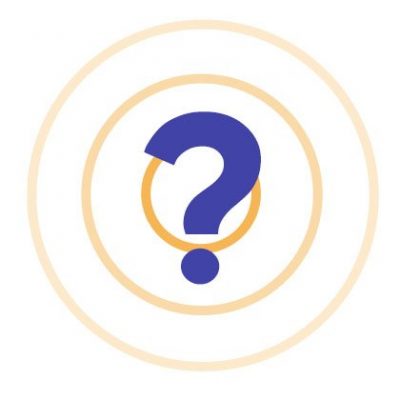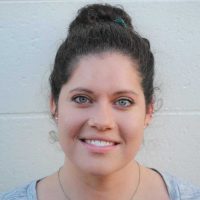Heel / Arch Pain
Severs (Heel / Achilles) Pain
Is an adolescent heel / Achilles pain is usually in very active children and is worst during activity and is caused by the ‘growth plate’ of the heel bone becoming irritated due to shock and worsened by tight calf muscles and Achilles tendon. Therefore, causing the child heel pain, sometimes this is due to an upsurge in sporting activities or poor running technique.
Arch / Instep Pain
Arch pain (Plantar fasciitis) but can have a range of causes and issues. Arch pain can be related to the muscles that help the big toe and the bones that make up the “arch” can have extra bone that is irritating or rubbing in footwear and even the plantar fascia. The symptoms are usually pain with activity and get worse during the day.
Calf / Shin Pain
Shin Splints Pain
Shin splints is an exercise-induced pain condition in the lower leg, specifically along the shin, usually the inner (medial) side. There are many different views on what causes shin splints, some believe it is caused by small tears in the structure of the membrane between the two bones of the lower leg (the tibia and fibula). While others suggest it is caused by overuse injury of tendons, muscle sprain, irritation and inflammation of the membrane surrounding the shin bones. The main symptoms include pain along the middle and lower shin, pain first comes on after running or exercising. Although if the pain is not treated it can come even during exercises or climbing stairs.
Gastronemius muscle strain
Caused by the upper calf muscle, either inner or outer (called the gastronemius muscles) that helps point the foot and toes, and flexes the knee, is stretched beyond its limits or sudden stress that the muscle isn’t ready to or isn’t able to handle. This usually occurs during sport that has quick changes or sprinting, when the muscles are too tight or are weak and ill conditioned. The symptoms are centred around pain/tenderness in the upper calf, stiffness or tightness when walking, especially going onto tiptoes, and sometimes a popping sensation. Like all muscle strains they are graded from “overstretched” to tears and ruptures.
Soleus muscle strain
Is when the lower calf muscle is strain. The lower calf muscle forms out of the Achilles tendon (called the soleus) extends to the upper calf which helps point the foot/toes and push off the ground when walking. The soleus is important in blood circulation by pumping the blood back to the heart. being stretched beyond its limits or sudden stress that the muscle isn’t ready to or isn’t able to handle. This usually occurs during sport that has quick changes or sprinting, when the muscles are too tight or are weak and ill conditioned. The symptoms are centred around pain/tenderness in the upper calf, stiffness or tightness when walking, especially going onto tiptoes, and sometimes a popping sensation. Like all muscle strains they are graded from “overstretched” to tears and ruptures.
Joint and Knee Pain
Adolescent Idiopathic Arthritis (AIA) or Rheumatoid Arthritis (RhA)
Adolescent Idiopathic Arthritis (OIA) is when a child develops arthritis without biomechanical reason. This causes the breakdown of the joint cartilage of ankles, knees and or hips, reducing range of motion and causes stiffening, swelling and pain. This is usually worsened by poor walking/running biomechanics, exercise technique and jamming of the joint. Rheumatoid arthritis (RA) is an autoimmune form which occurs when the body attacks its own joint tissue by mistaking itself for attacking foreign pathogens. This causes cartilage loss and joint pain, instability and deformity. Joint pain while walking or running is the main symptom, a ‘crunching’ sound and thickening or swelling, with the joint becoming stiffer the longer it progresses, especially in the morning.
Osgood-Schlatter disease (Knee pain)
Is adolescent knee pain and occurs mostly in very active children and is worst during activity like running and jumping. Osgood-Schlatter disease (OSD) is caused by the ‘growth plate’ at the top of the shin bone becoming irritated due to shock and worsened by tight quad muscles and patella (kneecap) tendon. Therefore, causing the child’s knee pain, sometimes this is due to an upsurge in sporting activities or poor running technique.
Night Pain
Growing Pain
Night Pains in adolescents is usually during times of rapid growth (growth spurts) and is worst during the evening after times of activity, generally occurs in feet, legs or the back. Growth/Night pains are caused by the bones growing and increasing their length quicker than the muscles that attach to them and therefore, become irritated due to the pulling and worsened by shock and stress through the tight muscles.
Unco-ordinated
Pigeon toed / Out toeing
Children with feet pointing inward or outward when walking and running, often find running uncomfortable or unco-ordinated. This is due to the misalignment of the feet to knees and hips, which causes the body to not work through the structures but twisting at odd angles. This can be caused by excessive flexibility of their joints or imbalances and instability in the hips or knee causing the leg to turn in or out. Occasionally the bones are not sitting correctly on each other, this can be surgically corrected but is best conservatively managed.
Knocked or Bowed Knees or Rolling-in Feet
Children with knees knocked or bowed, usually have feet that roll in when standing and makes walking and running difficult and sometimes painful. This is due to the misalignment of the feet to knees and hips, which causes the body to not work through the structures but twisting at odd angles. This can be caused by excessive flexibility of their joints or weakness or imbalances in the hips or knee causing feet rolling in, knees rotates inwards and knock together and feet turned out ( over pronation complex) or feet rolling out, knees rotates outwards and bow and feet turned in ( over supination complex). Toe walking causes aggressive tightness, thus they do it more and more, which then causes their weight further forward and their centre of gravity is not towards the heels, it is coming forward, which makes them fall over and throws off their balance. Most seen in Children with different/ asymmetrical leg lengths.
Click here for treatment options or Book an appointment Online now
TREATMENT
Treatment involves shoe advice and modifications, Joint mobilization to open up joint movement. Taping or strapping to reduce muscle tension and activate muscles and strengthening the joints. Padding or orthotics to help cushion and redistribute pressure or engage better biomechanical pathway. Ice (cryotherapy) and stone treatment for breaking down thickened tendons. Gait retraining to change how the body works and ensure it works together. And lastly Manual therapy to release tight muscles, muscle stimulation, open nerve pathways, improve range-of-motion, prescribe drills and exercises or order ultrasound and x-rays. Treatment for running injuries includes adjustments to training schedules, supplements (e.g. calcium), reducing muscle/joint/bone stress, gait retraining to offload or adjust how the structure works. Changing running terrain or orthotics.



